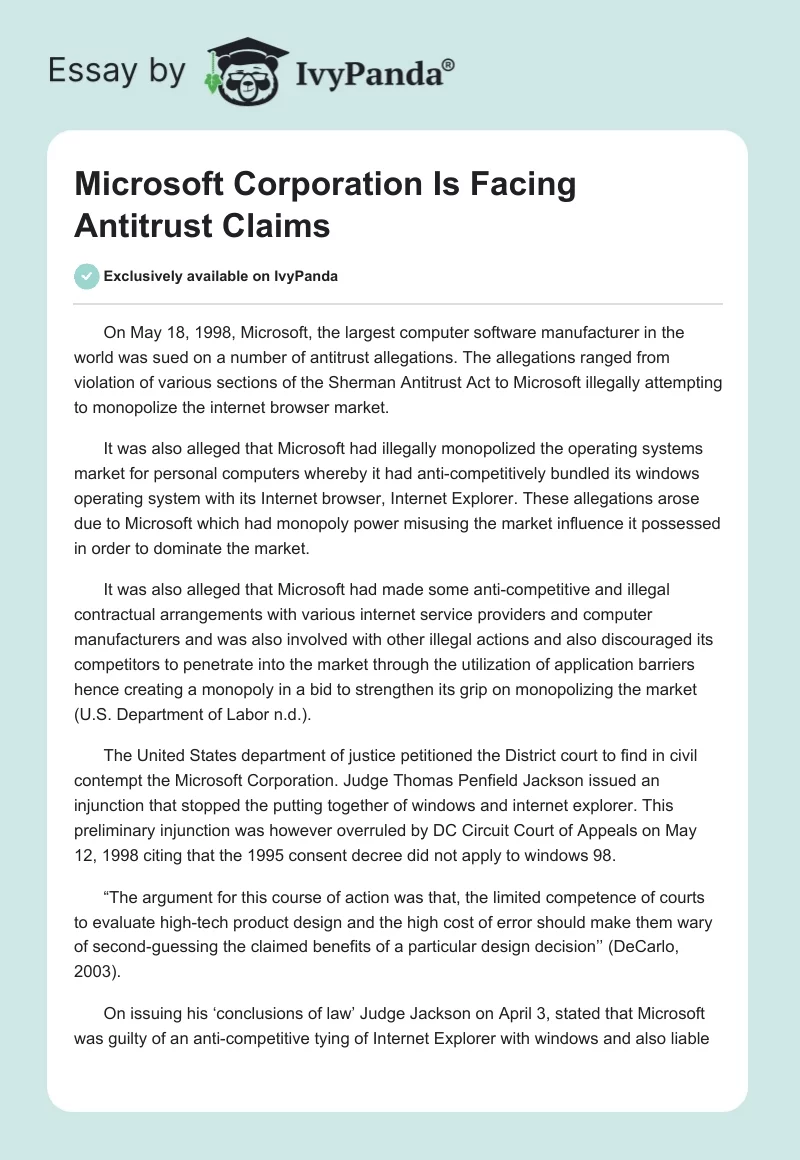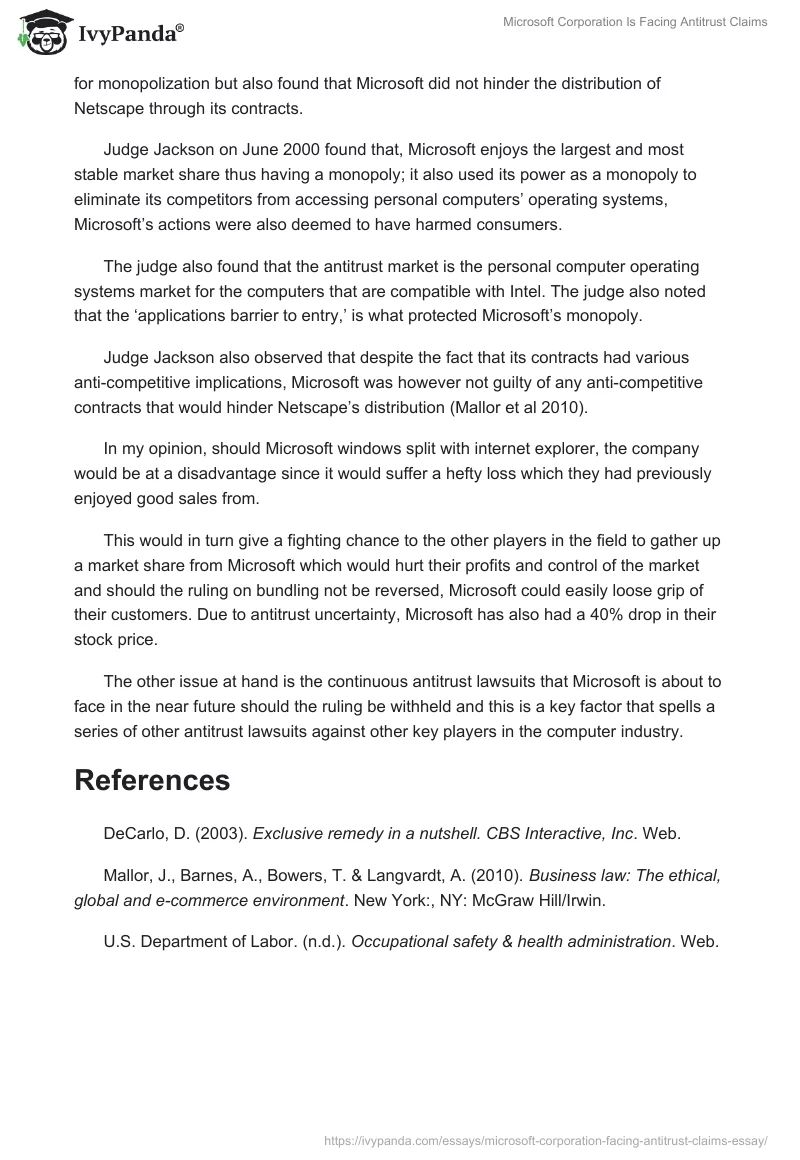On May 18, 1998, Microsoft, the largest computer software manufacturer in the world was sued on a number of antitrust allegations. The allegations ranged from violation of various sections of the Sherman Antitrust Act to Microsoft illegally attempting to monopolize the internet browser market.
It was also alleged that Microsoft had illegally monopolized the operating systems market for personal computers whereby it had anti-competitively bundled its windows operating system with its Internet browser, Internet Explorer. These allegations arose due to Microsoft which had monopoly power misusing the market influence it possessed in order to dominate the market.
It was also alleged that Microsoft had made some anti-competitive and illegal contractual arrangements with various internet service providers and computer manufacturers and was also involved with other illegal actions and also discouraged its competitors to penetrate into the market through the utilization of application barriers hence creating a monopoly in a bid to strengthen its grip on monopolizing the market (U.S. Department of Labor n.d.).
The United States department of justice petitioned the District court to find in civil contempt the Microsoft Corporation. Judge Thomas Penfield Jackson issued an injunction that stopped the putting together of windows and internet explorer. This preliminary injunction was however overruled by DC Circuit Court of Appeals on May 12, 1998 citing that the 1995 consent decree did not apply to windows 98.
“The argument for this course of action was that, the limited competence of courts to evaluate high-tech product design and the high cost of error should make them wary of second-guessing the claimed benefits of a particular design decision’’ (DeCarlo, 2003).
On issuing his ‘conclusions of law’ Judge Jackson on April 3, stated that Microsoft was guilty of an anti-competitive tying of Internet Explorer with windows and also liable for monopolization but also found that Microsoft did not hinder the distribution of Netscape through its contracts.
Judge Jackson on June 2000 found that, Microsoft enjoys the largest and most stable market share thus having a monopoly; it also used its power as a monopoly to eliminate its competitors from accessing personal computers’ operating systems, Microsoft’s actions were also deemed to have harmed consumers.
The judge also found that the antitrust market is the personal computer operating systems market for the computers that are compatible with Intel. The judge also noted that the ‘applications barrier to entry,’ is what protected Microsoft’s monopoly.
Judge Jackson also observed that despite the fact that its contracts had various anti-competitive implications, Microsoft was however not guilty of any anti-competitive contracts that would hinder Netscape’s distribution (Mallor et al 2010).
In my opinion, should Microsoft windows split with internet explorer, the company would be at a disadvantage since it would suffer a hefty loss which they had previously enjoyed good sales from.
This would in turn give a fighting chance to the other players in the field to gather up a market share from Microsoft which would hurt their profits and control of the market and should the ruling on bundling not be reversed, Microsoft could easily loose grip of their customers. Due to antitrust uncertainty, Microsoft has also had a 40% drop in their stock price.
The other issue at hand is the continuous antitrust lawsuits that Microsoft is about to face in the near future should the ruling be withheld and this is a key factor that spells a series of other antitrust lawsuits against other key players in the computer industry.
References
DeCarlo, D. (2003). Exclusive remedy in a nutshell. CBS Interactive, Inc. Web.
Mallor, J., Barnes, A., Bowers, T. & Langvardt, A. (2010). Business law: The ethical, global and e-commerce environment. New York:, NY: McGraw Hill/Irwin.
U.S. Department of Labor. (n.d.). Occupational safety & health administration. Web.


